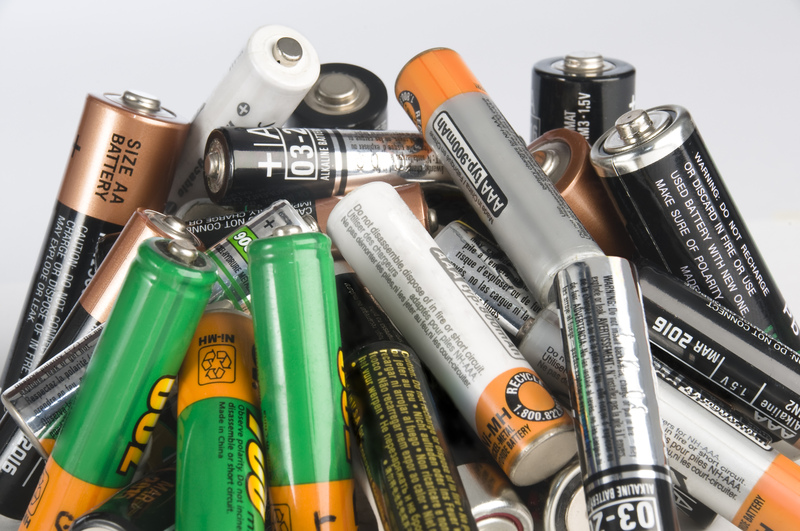Why Responsible PPE Waste Disposal Matters for Public Health
In recent years, the essential use of Personal Protective Equipment (PPE) has skyrocketed globally. The COVID-19 pandemic, increased awareness about infectious diseases, and new health protocols in workplaces and public spaces have made PPE--such as masks, gloves, face shields, and gowns--a part of daily life. However, as PPE usage rises, so does concern about its disposal. Improper disposal of PPE waste is not just an environmental problem; it is a serious public health issue. In this comprehensive article, we explore why responsible PPE waste disposal matters for public health, examine key challenges, and suggest actionable solutions.
The Surge in PPE Usage: A Double-Edged Sword
PPE serves as a vital barrier between individuals and potentially infectious agents. During health crises like COVID-19, masks and gloves became universal symbols of safety. Hospitals, offices, schools, and homes alike adopted increased PPE use to protect people. According to industry reports, global PPE production increased by several hundred percent during the pandemic's peak.
- Worldwide PPE sales tripled between 2019 and 2021.
- Billions of disposable masks and gloves entered supply chains monthly.
- Single-use PPE dominated, especially in healthcare, hospitality, and retail sectors.
While this surge in supply helped curb viral transmission, it also resulted in a new kind of waste management crisis. Millions of tons of PPE waste now require responsible handling to prevent their negative impacts on health and the environment.

What Constitutes PPE Waste?
PPE waste refers to any used or discarded personal protective equipment. It includes:
- Single-use surgical masks
- N95 or other filtering facepiece respirators
- Disposable gloves (latex, vinyl, nitrile, polyethylene)
- Protective gowns or aprons
- Face shields and goggles
- Shoe or head covers
These items are often constructed from plastics, synthetic rubbers, and other non-biodegradable materials. Their improper disposal generates hazardous medical waste, which can be infectious, toxic, or environmentally persistent.
Key Reasons Responsible PPE Waste Disposal Is Critical for Public Health
1. Preventing Disease Transmission
Used PPE items, especially those from healthcare settings, may harbor pathogens. If such waste isn't managed carefully, it can become a direct source of infection. Studies show:
- Viruses like SARS-CoV-2 can remain viable on plastic surfaces for up to 72 hours.
- PPE discarded in common areas may pose a risk to sanitation workers, children, and animals.
- Contaminated gloves and masks found in public spaces can facilitate indirect transmission of infectious diseases.
Timely and proper PPE disposal--such as sealed bagging and disposal in dedicated medical waste streams--disrupts these transmission chains, protecting community health.
2. Minimizing Environmental Contamination
The improper disposal of PPE often leads to its accumulation in landfills, waterways, streets, and even natural habitats. This can have a multifaceted impact on public well-being:
- Microplastics from PPE break down slowly and enter food and water supplies.
- Disposables may clog sewage and drainage systems, contributing to urban flooding and sanitation crises.
- Chemicals leaching from decaying PPE can contaminate soil and groundwater, affecting agricultural and drinking water sources.
Environmental contamination from PPE waste ultimately circles back to threaten human health. Its presence in fish and farm produce highlights the connection between clean surroundings and overall well-being.
3. Protecting Waste Handlers and Healthcare Workers
Responsible PPE disposal practices safeguard those who work on the front lines of sanitation and healthcare. Waste collectors, medical staff, and landfill workers are routinely exposed to potentially infectious materials. If PPE is not properly segregated and labeled:
- Workers may accidentally touch or inhale pathogens adhered to PPE surfaces.
- Sharps or broken PPE can cause injury, increasing infection risk.
- Inadequate training or lack of protective gear for waste handlers exacerbates the hazard.
A culture of responsible PPE waste management--including training, awareness, and supply of protective equipment--can significantly reduce these risks.
4. Limiting Antimicrobial Resistance (AMR) Spread
Another concerning dimension is antimicrobial resistance. PPE disposed of without proper treatment may carry not only bacteria and viruses but also antibiotic-resistant genes. When these enter the environment unchecked, the potential for AMR spread increases dramatically.
According to the World Health Organization, environmental contamination is a major driver of AMR, which could threaten millions of lives worldwide. Disposing of PPE waste correctly cuts off this pathway and helps preserve the effectiveness of antibiotics.
The Global Challenge of PPE Waste Management
Mountains of Waste: Scope and Scale
The World Health Organization estimates that the pandemic generated over 87,000 tons of PPE waste by mid-2021, much of which overwhelmed existing waste management capacities. Many cities and countries lack infrastructure or guidelines for efficiently distinguishing and treating medical versus domestic PPE waste.
- Developing nations struggle with underfunded waste collection and treatment systems.
- Even advanced economies have faced an unprecedented surge in single-use PPE waste.
- Improvised or unsupervised landfill dumping remains widespread.
This landscape highlights the urgent need for both short-term and long-term solutions.
PPE Waste in Public Spaces
Not all PPE waste comes from hospitals. A large share is produced at homes, offices, restaurants, and public transport. Unfortunately, discarded masks and gloves are commonly seen littering:
- Parks and recreational areas
- Beaches and water bodies
- Sidewalks and parking lots
- Shopping centers and markets
Such widespread pollution exposes the general population to unnecessary health risks.
Gaps in Policy and Awareness
Existing medical waste regulations often do not fully apply to the huge volume of PPE generated outside healthcare settings. Lack of clear laws, inconsistent guidelines, and limited public awareness are some of the biggest barriers to responsible PPE waste disposal.
- Households may not know how to dispose of used PPE safely.
- Businesses may lack training or facilities for responsible disposal.
- Laws vary greatly by city and country, causing confusion and inaction.
Strategies for Responsible PPE Waste Disposal
1. Segregation and Containment
The first step in responsible PPE waste management is proper segregation. Households and businesses should separate used PPE--especially if potentially contaminated--from general waste. Where possible:
- Dispose of masks and gloves in properly labeled, sealed bags before placing them in bins.
- Install special collection points for used PPE in public and workplace settings.
- Restrict access to waste storage areas to prevent accidental contact.
2. Safe and Secure Collection Systems
Waste management authorities should develop dedicated PPE waste collection services, similar to hazardous medical waste protocols. This minimizes the risk of mixing infectious and non-infectious waste and reduces exposure during transport and handling.
3. Advanced Treatment and Disposal
Where resources allow, PPE waste should be incinerated at high temperatures or sterilized through autoclaving. Some regions are also exploring chemical disinfection or recycling options. Key principles include:
- No open-air burning or unsupervised dumping
- Treatment at certified facilities equipped for medical waste
- Monitoring waste streams to prevent leakage into municipal landfills
4. Public Awareness and Education
Informing communities about the risks of improper PPE disposal and how to manage it responsibly is essential. Educational campaigns can target:
- Proper techniques for removing and discarding PPE
- Reporting and avoiding discarded PPE in public places
- The environmental and health impacts of PPE littering
Clear, consistent messaging helps foster a sense of shared responsibility.
5. Policies, Incentives, and Enforcement
Governments and organizations must enact and enforce clear guidelines for responsible PPE waste disposal that apply across both private and public settings. This may include:
- Mandatory segregation and labeling of PPE waste
- Penalties for littering PPE in public spaces
- Support for local waste management initiatives and technology upgrades
- Incentives for developing reusable or biodegradable PPE alternatives

The Future of PPE and Public Health: Toward Sustainable Solutions
Looking ahead, the world's reliance on PPE is unlikely to wane. Infectious diseases, pollution, and new global health threats will continue to drive demand. However, innovative solutions that balance protection with sustainability are gaining traction.
Developments in Eco-Friendly PPE
Researchers and companies are now developing biodegradable masks and gloves made from natural fibers like bamboo, hemp, and starch-based polymers. While challenges remain--such as cost and supply chain scalability--these alternatives promise to reduce the long-term public health risks associated with plastic waste.
Investment in Circular Waste Systems
Circular economy models envision systems where PPE waste is collected, sterilized, and either safely recycled or composted. Some pilot programs around the world are demonstrating the feasibility of upcycling used PPE into construction materials or energy sources.
Community and Corporate Responsibility
Ultimately, the path to responsible PPE waste management combines individual action, robust community engagement, and leadership from business and government. By integrating these efforts, societies can minimize the harms of PPE waste to public health and the environment.
Conclusion: Why Responsible PPE Waste Disposal Matters for Public Health
The surge in PPE use has undoubtedly shielded millions from infection. Yet, the story does not end at protection; it extends to what happens after PPE is discarded. Responsible PPE waste disposal protects public health by halting disease transmission, preventing environmental contamination, safeguarding essential workers, and slowing the rise of antimicrobial resistance.
To achieve lasting progress, individuals, organizations, and policymakers must prioritize safe, sustainable, and responsible PPE waste management. Through education, innovation, regulation, and collective action, we can ensure that the tools we use to protect ourselves do not become threats in their own right.
Together, let's recognize why responsible PPE waste disposal matters for public health and take action to keep our communities safe, now and into the future.